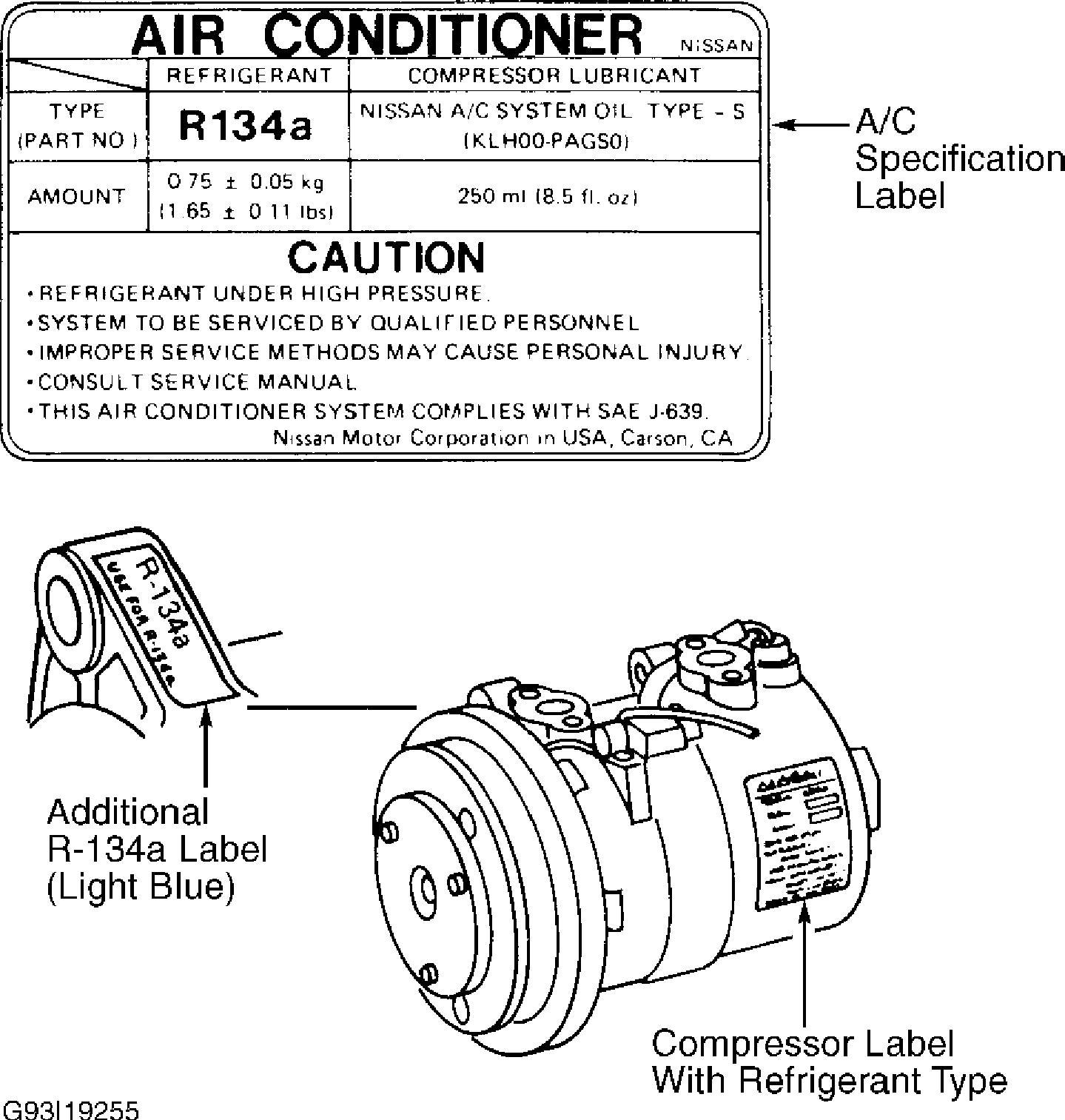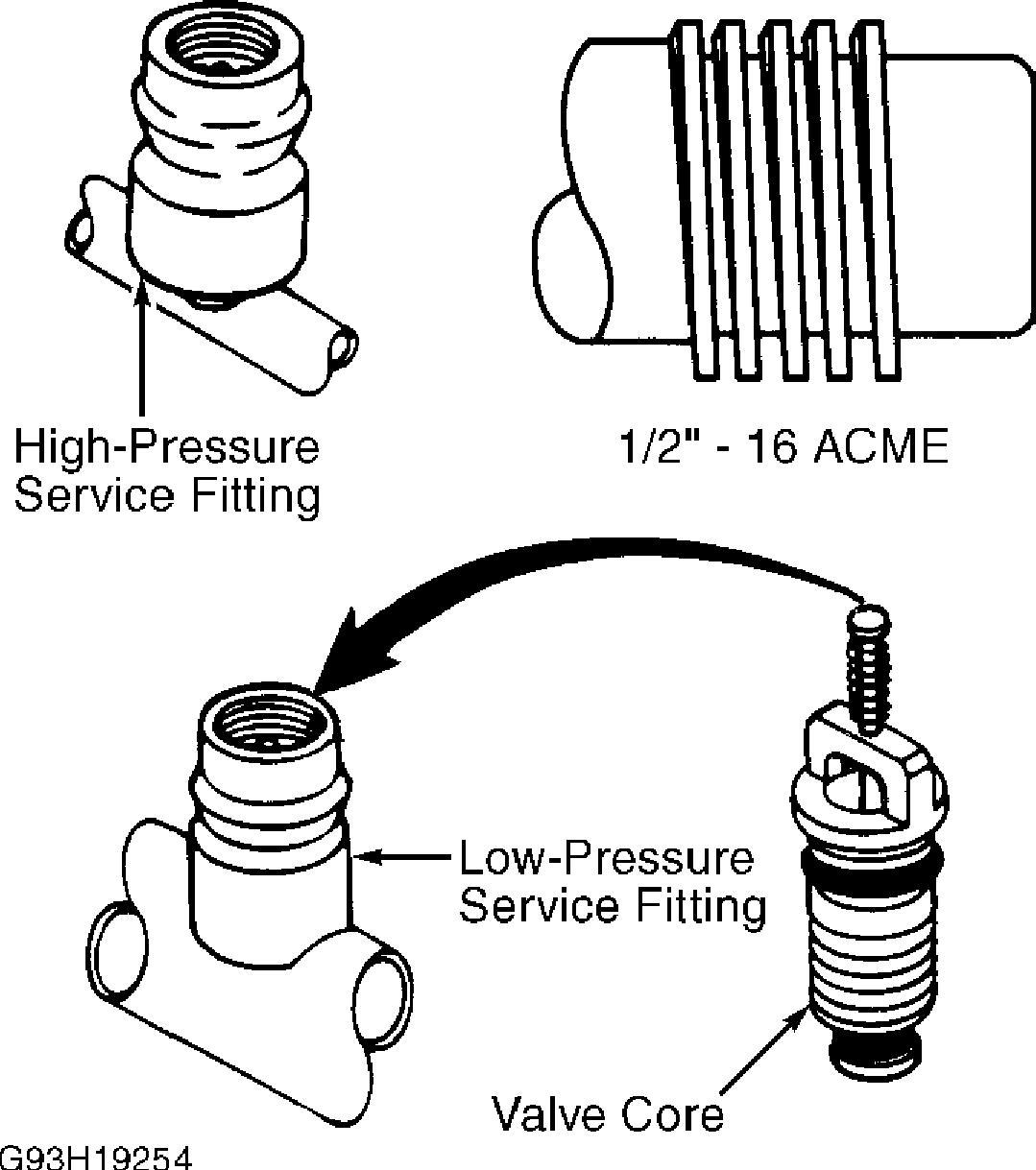A/C SYSTEM GENERAL SERVICING Article Text 1997 Volvo 850 For 1 Copyright Š 1998 Mitchell Repair Information Company, LLC Wednesday, November 10, 2010 06:15AM
ARTICLE BEGINNING 1997 A/C General Servicing Procedures All Volvo Models * PLEASE READ THIS FIRST * NOTE: Always refer to underhood A/C specification label in engine compartment or A/C compressor label while servicing A/C system. If engine compartment/compressor label specifications differ from specifications in this article, use underhood/compressor label specifications. USING R-12 & R-134a REFRIGERANT HANDLING/SAFETY PRECAUTIONS 1) Always work in a well-ventilated, clean area. Refrigerant is colorless and is invisible as a gas. Refrigerant is heavier than oxygen and will displace oxygen in a confined area. Avoid breathing refrigerant vapors. Exposure may irritate eyes, nose and throat. 2) The system's high pressure can cause severe injury to eyes and skin if a hose were to burst. Always wear eye protection when working around A/C system and refrigerant. If necessary, wear rubber gloves or other protective clothing. 3) Refrigerant evaporates quickly when exposed to atmosphere, freezing anything it contacts. If liquid refrigerant contacts eyes or skin, DO NOT rub eyes or skin. Immediately flush affected area with cool water for 15 minutes and consult a doctor or hospital. 4) Never use R-134a in combination with compressed air for leak testing. Pressurized R-134a in the presence of oxygen (air concentrations greater than 60% by volume) may form a combustible mixture. DO NOT introduce compressed air into R-134a containers (full or empty), A/C system components or service equipment. 5) DO NOT expose A/C system components to high temperatures, steam cleaning for example, as excessive heat will cause refrigerant/system pressure to increase. Never expose refrigerant directly to open flame. If refrigerant needs to be warmed, place bottom of refrigerant tank in warm water. Water temperature MUST NOT exceed 125 F (52 C). 6) Use care when handling refrigerant containers. DO NOT drop, strike, puncture or incinerate containers. Use Department Of Transportation (DOT) approved, DOT 4BW or DOT 4BA refrigerant containers. 7) Never overfill refrigerant containers. The safe filling level of a refrigerant container MUST NOT exceed 60% of the container's gross weight rating. Store refrigerant containers at temperature less than 125 F (52 C). 8) R-12 refrigerant (Freon) will be sold and stored in White containers, while R-134a refrigerant will be sold and stored in 30 or



